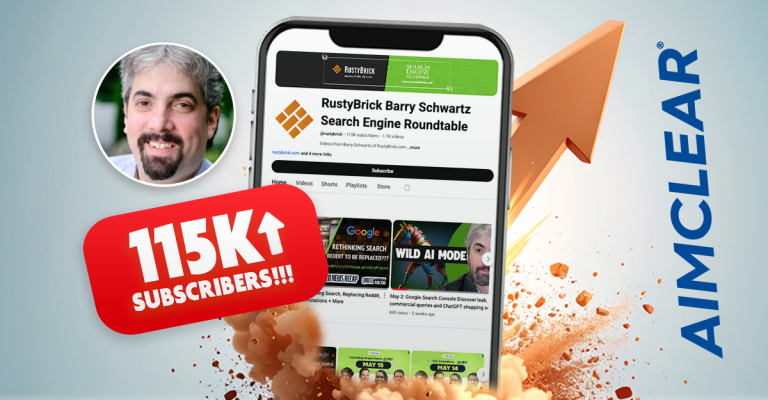Day 2 of SMX East had us back at it at Javits. Today’s paid search sessions focused on account structure and testing. In other words, some fine PPC geekery. Let’s jump right in.
All about account structure
Concept of account structure
To kick off this session, Justin Freid of Emerging Media dug into the underlying concepts of account structure. Essentially, users are searching for answers and it’s our goal as marketers to make this an easy process for them. We want to get them to these answers as efficiently as possible. Keep this basic principle in mind when deciding on campaign structure, outlined as follows:
- Query –> target keyword –> ad text –> landing page
To help a user find what they’re searching for, we must be relevant. Take, for example, the query “black Nike shoes size 14.” Our keyword should closely resemble “black Nike shoes size 14.” Next, our ad text should reflect the product and ultimately direct to a landing page that highlights this type of shoe.
It’s too much!!
We all agree that it would be ideal to have customized ad creative for each keyword. Hell, why not have one keyword per campaign, per account? The answer is simple: It’s too much to manage. Where do you focus your efforts on the account? Should you always start with structure? According to Susan Wenograd of Five Mill, start where the most budget is being spent. When you find the campaigns, ad groups, keywords, ads and, ultimately, queries where you’re putting the most budget, decide if it’s a structural problem you’re dealing with. Is there ever a time where you won’t touch a confusing account structure? Susan admits that if it’s getting strong results, don’t fix what isn’t broken.
Actionable ideas for your account structure
Once you analyze and determine a structural change is necessary, what are your options? Where do you start? A solid starting point is generating a consistent naming convention for your campaigns. Popular segmentations include the following:
- Brand vs. Non-Brand
- Match Types
- Products
- Devices
- Geos
Putting all of the pieces together, here’s what you’d end up with:
- Product X
- Product X – Brand
- Product X – Brand – Exact
- Product X – Brand – Exact – Desktop
- Product X – Brand – Exact – Desktop – Geo
The more granular control you have over all aspects of your optimizations, the better your ability to drive performance. However, divide the segments based on what makes sense for your business goals. If you don’t have the time or ability to manage a large amount of campaigns, make an educated decision on how granular to go. No matter what, your naming convention should be consistent to increase ease of management and improve reporting.
Once campaigns are staged, a common area of debate is deciding how many keywords should be included in each ad group. Perhaps even more controversial, do you use only one match type per ad group, or many? James Svoboda of WebRanking spoke to the value of having multiple match types per ad group, one of which is the ability to do tiered bidding. Justin, on the other hand, highlighted how much easier it is to use ad group and possibly campaign negative keywords and lists with one match type per ad group. So which is right? The answer is every PPC expert’s favorite answer: It depends. Based on an advertiser’s business model, campaign structure will vary drastically between accounts.
Testing taken to the next level
Test when best
A solid structure enables you to test more efficiently. Most of us know why it’s valuable to test: We test to find out what works and to ultimately increase our ROI. Ted Ives of Ted Ives Consulting brought up a good point when he declared that even successful tests may worsen performance. He explained that when you begin testing, not all of your budget is flowing through your top assets, which will likely lower your overall performance. That said, be strategic with when you decide to run tests.
Using the full funnel
Jake Pinocchio of Red Ventures took a more scientific approach to testing, and emphasized the importance of paying attention to the entire funnel in the process. Before any type of test, establish the following:
- Testing goal
- Hypothesis
A testing goal might be to determine if enabling enhanced CPC drives a higher ROI. The hypothesis for this goal could read: Enhanced CPC will increase average CPC, but increase conversion rates thus lowering cost per conversion and ultimately increasing ROI.
The above example touches on the full-funnel approach. In many tests, certain metrics look worse along the way, but the bottom-line performance may actually improve. Jake highlighted a case study in which he tested pausing call extensions in an attempt to lower CPCs. Here’s what happened:
- CTR: Flat
- CPC: Down modestly
- Calls: Down significantly
If they weren’t taking a full-funnel approach to this test, they may have called it off and declared that they couldn’t sacrifice those calls as they are important to the bottom line. Instead, they looked at what was happening further down the funnel:
- Conversions: Up
- Cost per conversion: Down significantly
- ROI: Up significantly
Even though the metrics early on didn’t look promising, they didn’t abort the test until they had a view of the full funnel. ROI was ultimately better in the end.
Here are three areas that Jake recommends everyone test, if possible:
- If offering multiple products/services that differ by lifetime value, test which lead offer yields the most profit
- Eliminating desktop call extensions can lower CPCs, but test to ensure you aren’t losing out on profitable calls
- Enhanced CPC allows you to take your hands off the wheel and let Google take over; watch what happens
In conclusion, next time you hear buzz around the office about testing, slow down and make sure you’re running the right test at the right time. If it’s crunch time on performance, maybe it’s a good idea to back off on testing for a while. Once you begin running your test, don’t panic! Focus on the full funnel to get a holistic view of what’s actually going on and make the decision based on what’s best for your bottom line.
Two days down, one to go! ICYMI, read our SMX East day 1 recap, and check back tomorrow for final thoughts from day 3.









